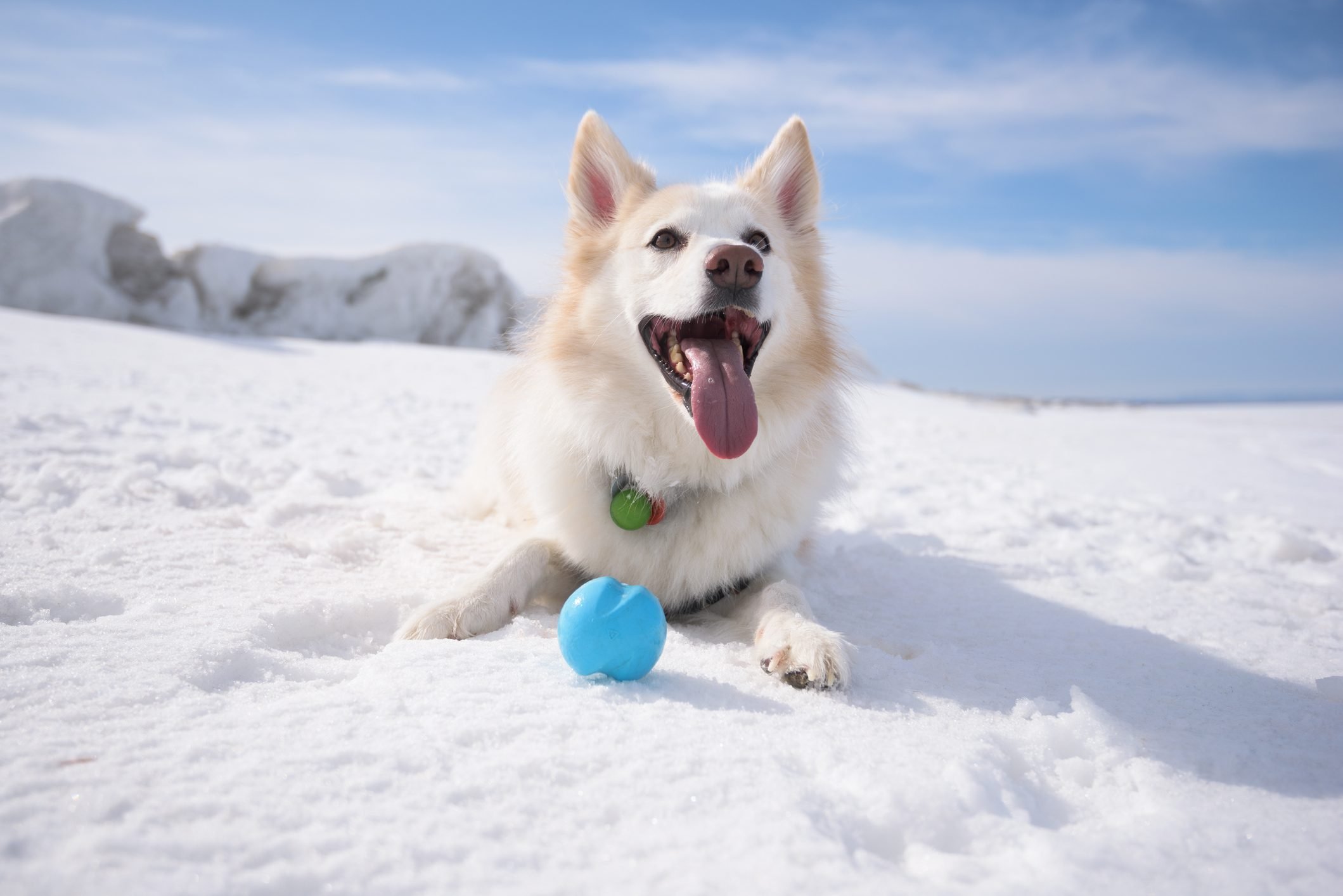
Take responsibility for your four-legged family members
Our furry friends have become such an integral part of the family (the benefits of owning a pet are undeniable) that it’s hard not to incorporate them into the fun and festivities of the holidays—dressing them in fuzzy holiday outfits and buying them cute holiday collars, toys and treats is a joy for any pet parent. But Fido and Fifi are also counting on you to keep them safe this winter.
“It’s important that we pay attention to their changing needs as the hustle and bustle of the holiday season can take its toll on them as well as on us,” says Dr. Antje Joslin, DVM, veterinarian at national dog daycare franchise Dogtopia. “This is especially true for dogs and cats that suffer from anxiety. The added company at home, changes in schedules and sometimes louder surroundings can be problematic and stressful.” She suggests making an appointment with your veterinarian to discuss an action plan to manage your pet’s anxiety before the season kicks into high gear, as getting ahead of it will help you both enjoy the holidays with less stress.
Note: Prices listed were accurate as of press time; pricing fluctuations may occur.
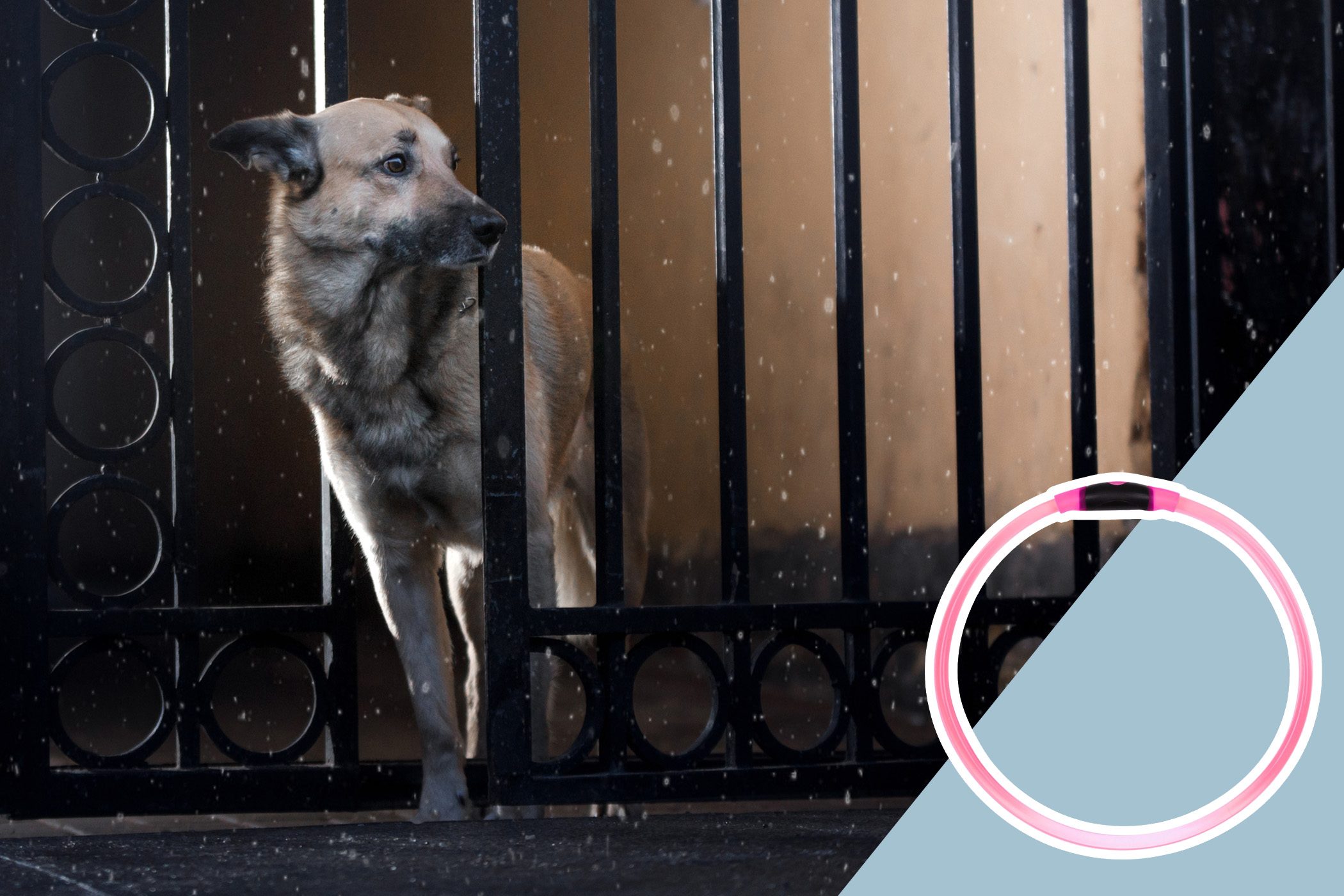
Plan ahead for darker days
$9.59
Since it gets darker earlier this time of year, you’ll need to stay one step ahead of nightfall to ensure your pet’s safety. “It’s a good idea to use a reflective collar and leash,” says Dr. Joslin, “but also to put a light source on your dog and yourself so you can be easily seen in the dark.” She says glowstick necklaces also work great in a pinch, but don’t let your pup chew on them. We like this Nite Ize NiteHowl LED Safety Necklace Dog Collar.
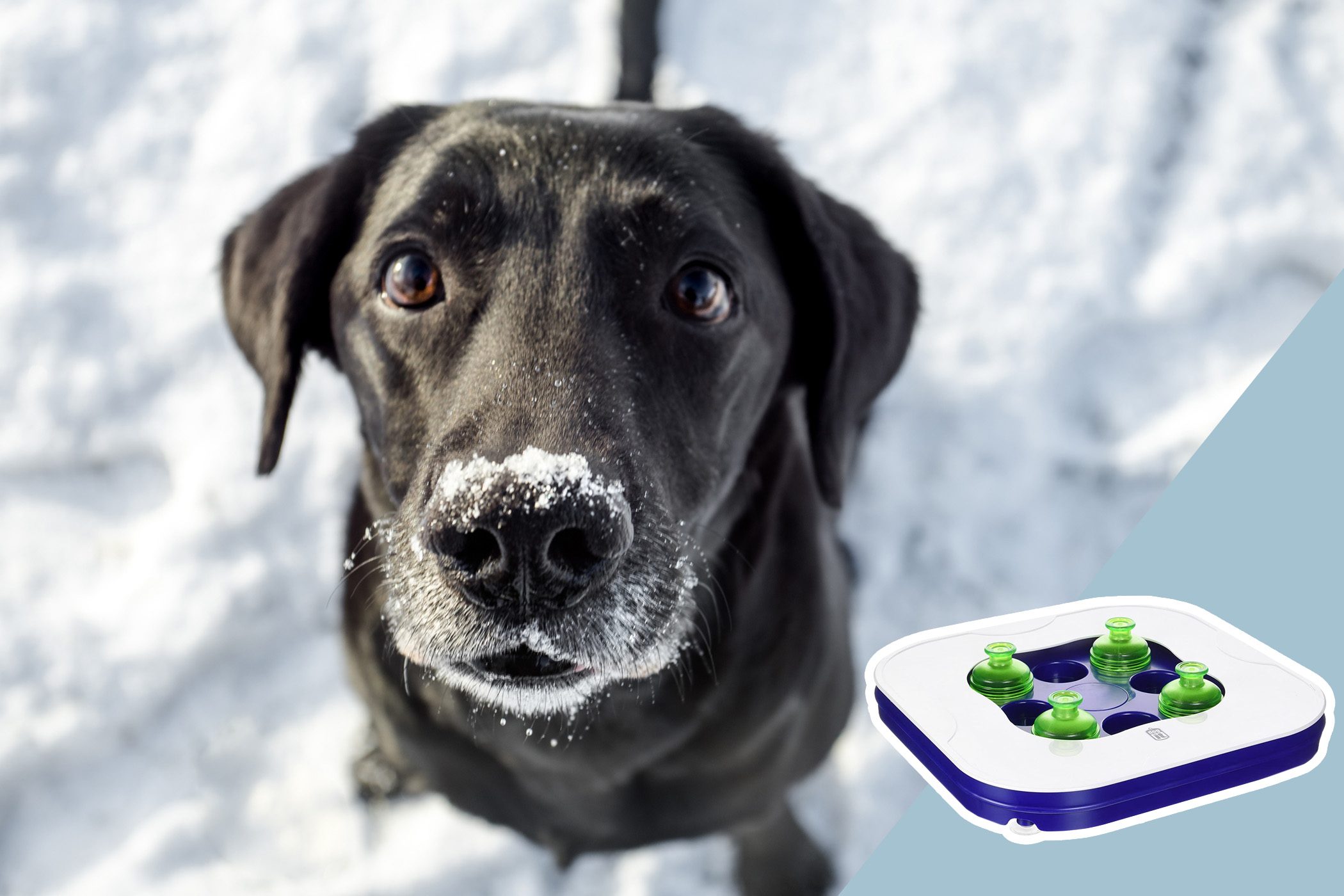
Limit their time outside
$22.83
“First, you have to consider things associated with the cold and the wind,” says Bruce Kornreich, DVM, PhD, associate director of the Feline Health Center at the Cornell University College of Veterinary Medicine. For most house pets, the easiest way to make sure they stay safe during the winter is to keep them inside. “Ideally, we definitely recommend that cats be kept indoors, year-round, because they’re at greater risk for infectious diseases, for trauma, and for being preyed upon by other animals outside,” Dr. Kornreich says. To keep them from getting bored, invest in a treat puzzle, like this one from Dogit.
Likewise, Ilan Frank, DVM, sports medicine and rehabilitation resident at Colorado State University’s Veterinary Teaching Hospital, says the easiest way to keep pet dogs safe from the cold is to keep them inside for the bulk of the day and overnight. “For most dogs on a quick five to ten-minute walk around the block don’t need a vest, boots, or any special devices,” he says. And while you’re rethinking their time spent outside, it’s a good time to do an audit of these 10 shockingly common dog dangers in your own backyard.
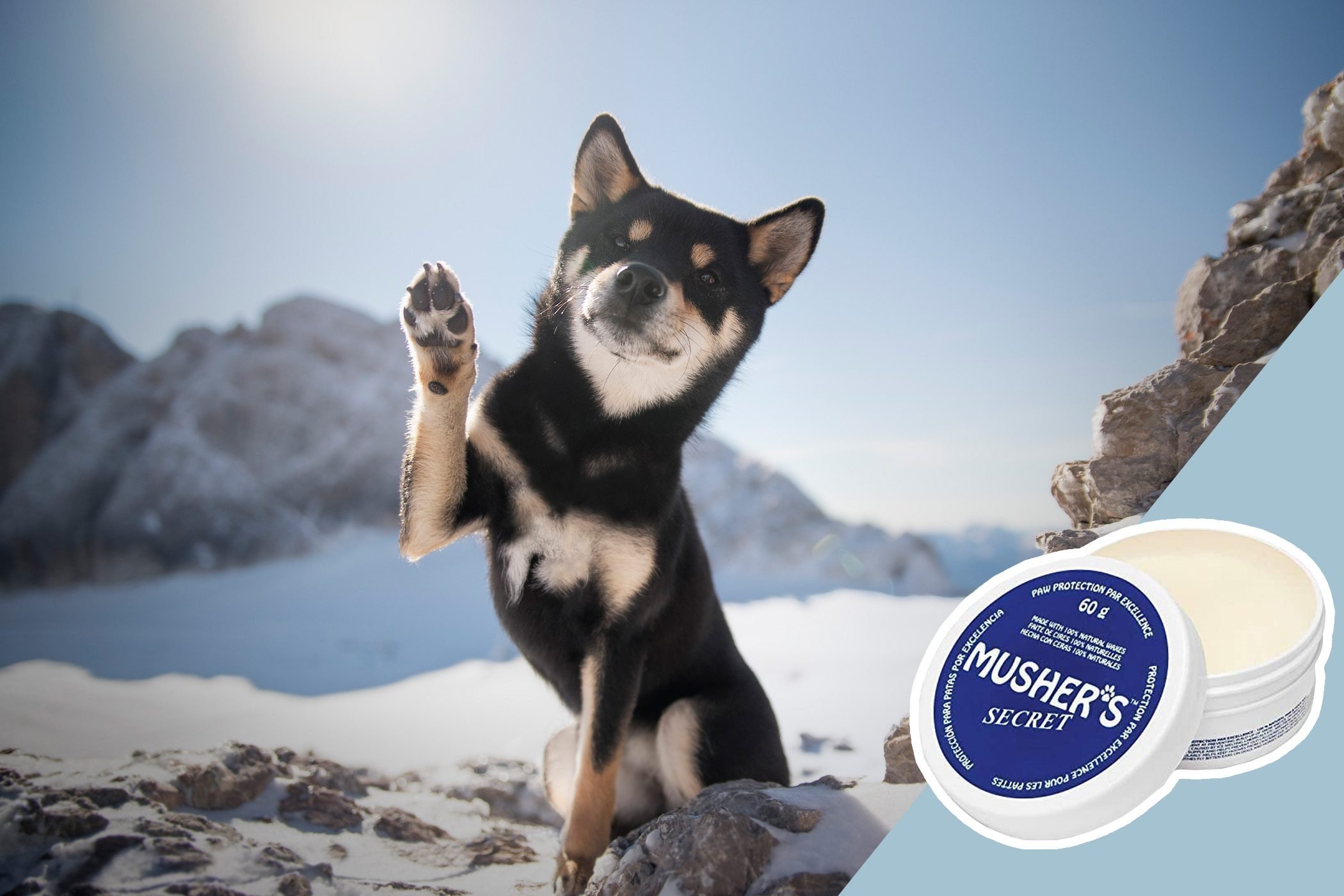
Protect their paws
$14.99
Of course, there are some circumstances that call for extra attention, particularly if you live in a snowy or icy part of the country and your neighbors or town use salt to de-ice sidewalks and streets. Grains of salt can get caught between a dog’s paw pads and cause a painful sore. If salty walking surfaces are common, you might want to put botties on your dog, apply a paw balm like Musher’s Wax, or at least clean their paws when you get home (a dip in lukewarm water and gentle drying with a towel should do the trick). Don’t miss these other products pet owners say they can’t live without.
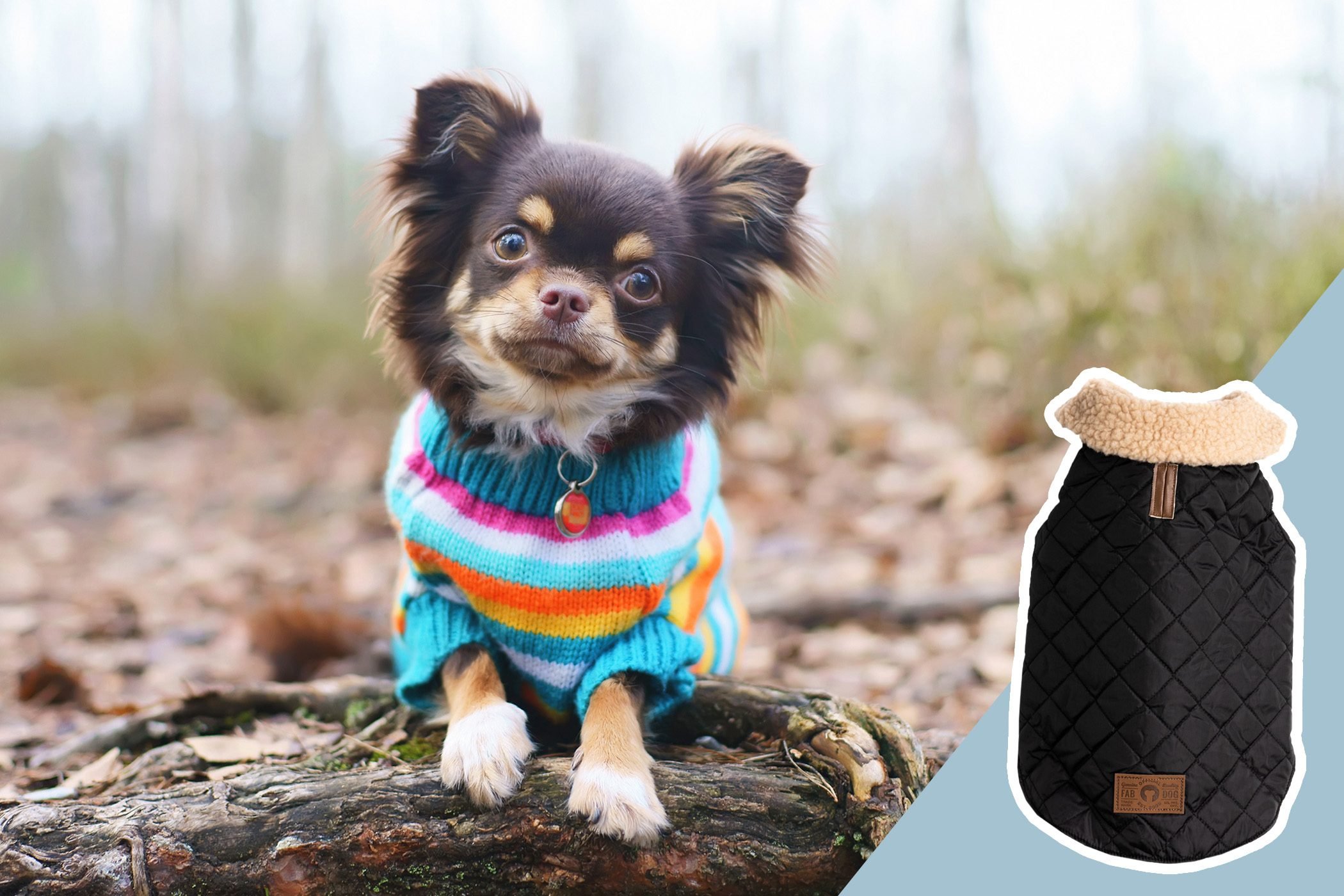
Know when winter gear is necessary
$40.00
While dogs in jackets are awfully cute, Dr. Frank says canine outerwear is only really necessary for certain breeds. “Dogs aren’t like people,” he says. “They can cope pretty well with cold conditions, especially versus hot ones. It might take most dogs a couple of days to acclimate to a cold climate, but it can take a month in hot weather.” But he points out that small dogs—particularly toy breeds—and those with short coats, like pointers or vizslas, will be more comfortable wearing an extra layer when they go out for walks in cold temperatures. If you do decide to go this route, consider this Fab Dog quilted shearling coat or one of these coziest dog coats for winter.
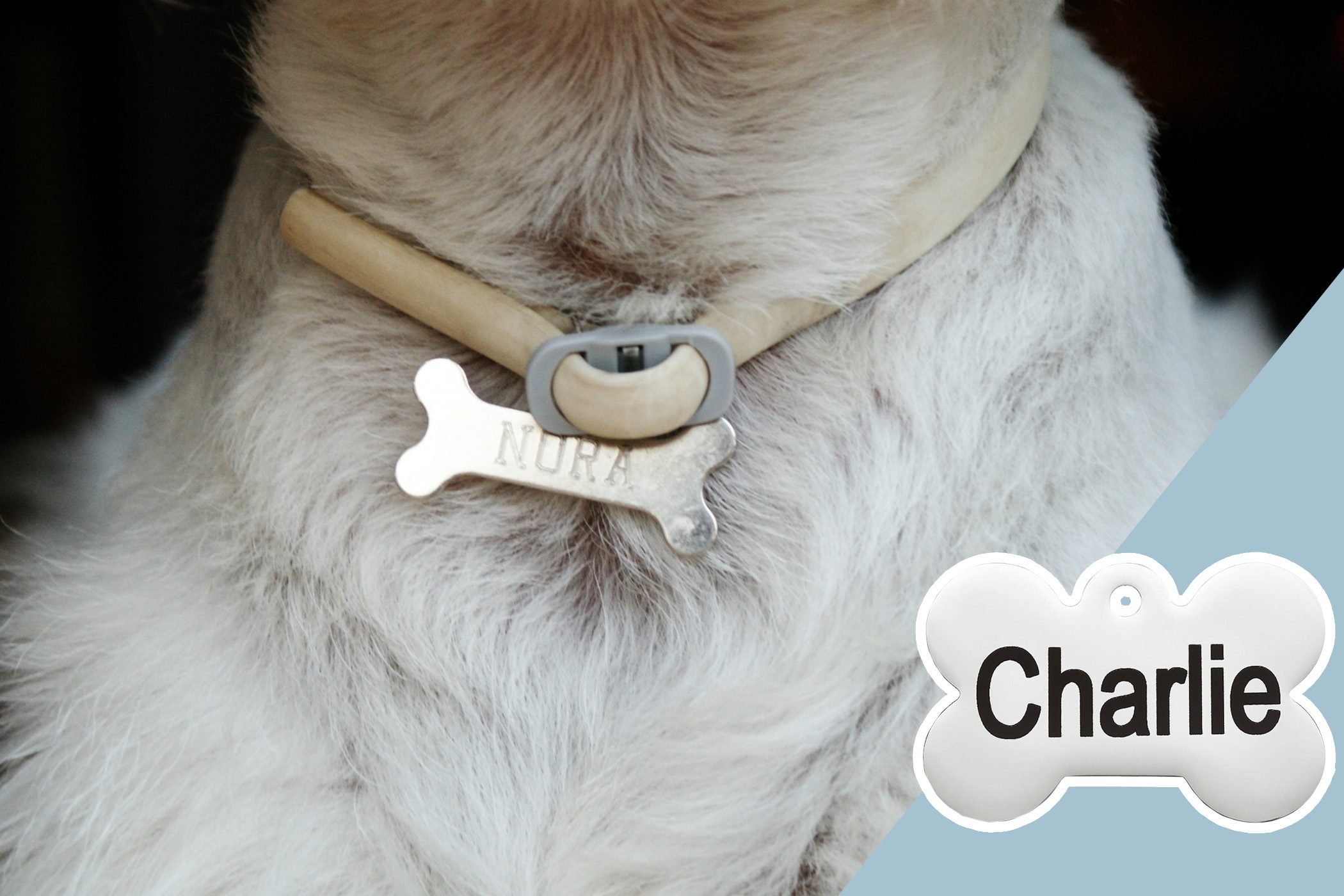
Make pet identification a top priority
$7.95
Make sure your pet’s tags and microchips are up to date. “A lost pet during the holidays is particularly devastating,” says Dr. Joslin. “If you are leaving town and having someone else watch your pets, make sure there is enough food and medications to get through your whole trip. You don’t want your pet-sitters to change foods or have to call around to get medications filled.” Be sure to leave all the contact information for your veterinarian. Additionally, let the veterinarian know who is watching your pet and if you are authorizing care and financial responsibility in your absence.
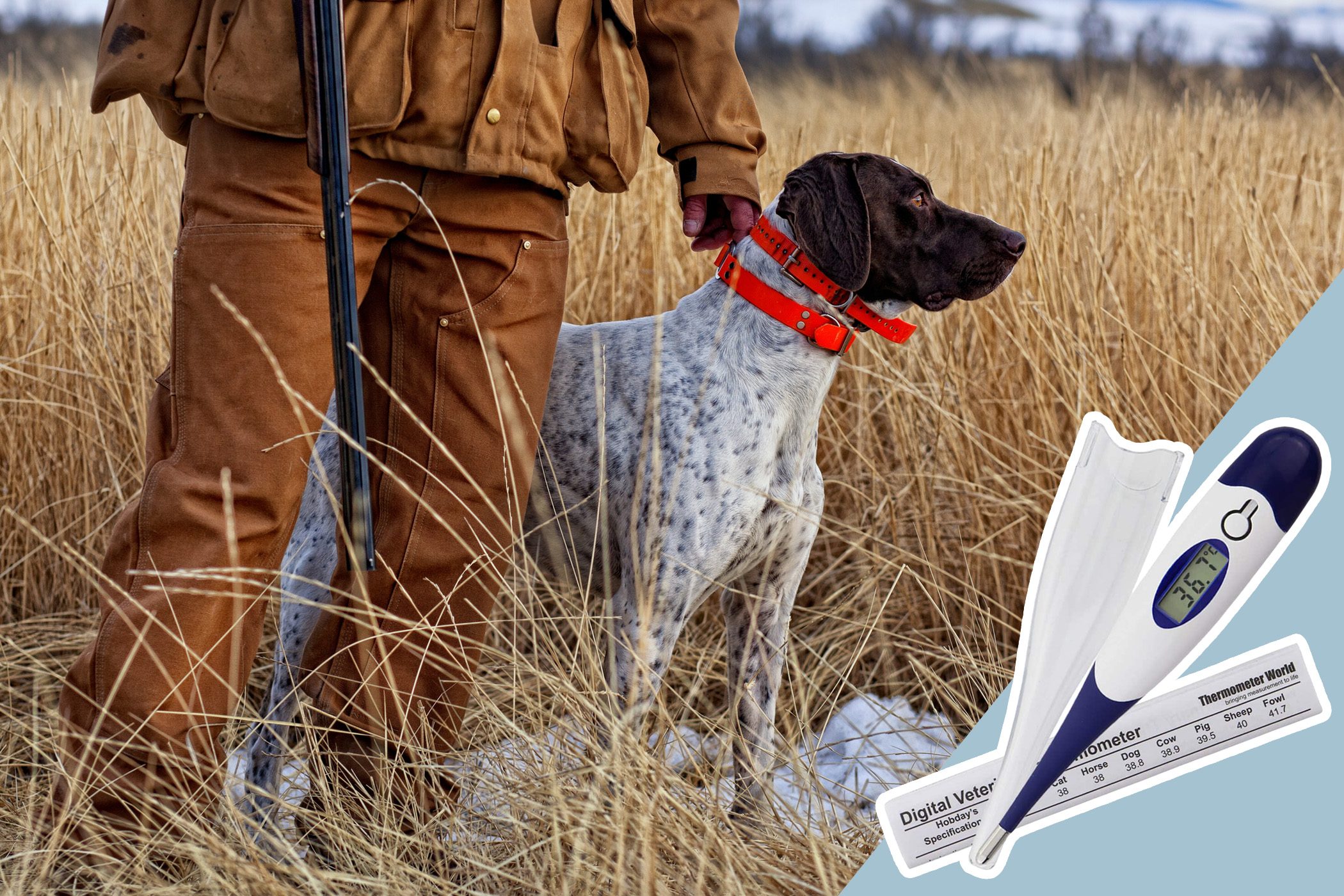
Monitor working dogs and older dogs
$9.95
For dogs that aren’t indoor house pets—like farm dogs and other working dogs that stay outside for long periods or live in outdoor kennels—Dr. Frank says owners do need to be careful about how cold it is and to keep an eye on their dogs’ condition. “In general, signs of hypothermia in dogs are similar to those in people,” he says. “They usually become more sedated, their blood pressure drops down, and they might lose consciousness.”
First, make sure you, as a responsible pet owner, know when it’s too cold for dogs to go outside. Next, if your dog is naturally sedentary, you shouldn’t assume your pup is fine if it’s been just sitting around out in the cold for a long time. The best way to tell for sure if a dog is suffering from hypothermia is to take a rectal temperature, which Dr. Frank recognizes most dog owners aren’t going to do. That’s why it’s better to make sure outdoor dogs have access to warmth when it’s really cold outside.
Dr. Frank worries particularly about older dogs that might have some cognitive dysfunction. “They might not really completely understand the situation, or might forget they’re outside,” he says. “Don’t assume that they just like to lay out in the snow for a couple of hours. If you have an older guy, you might need to initiate bringing him back inside.”
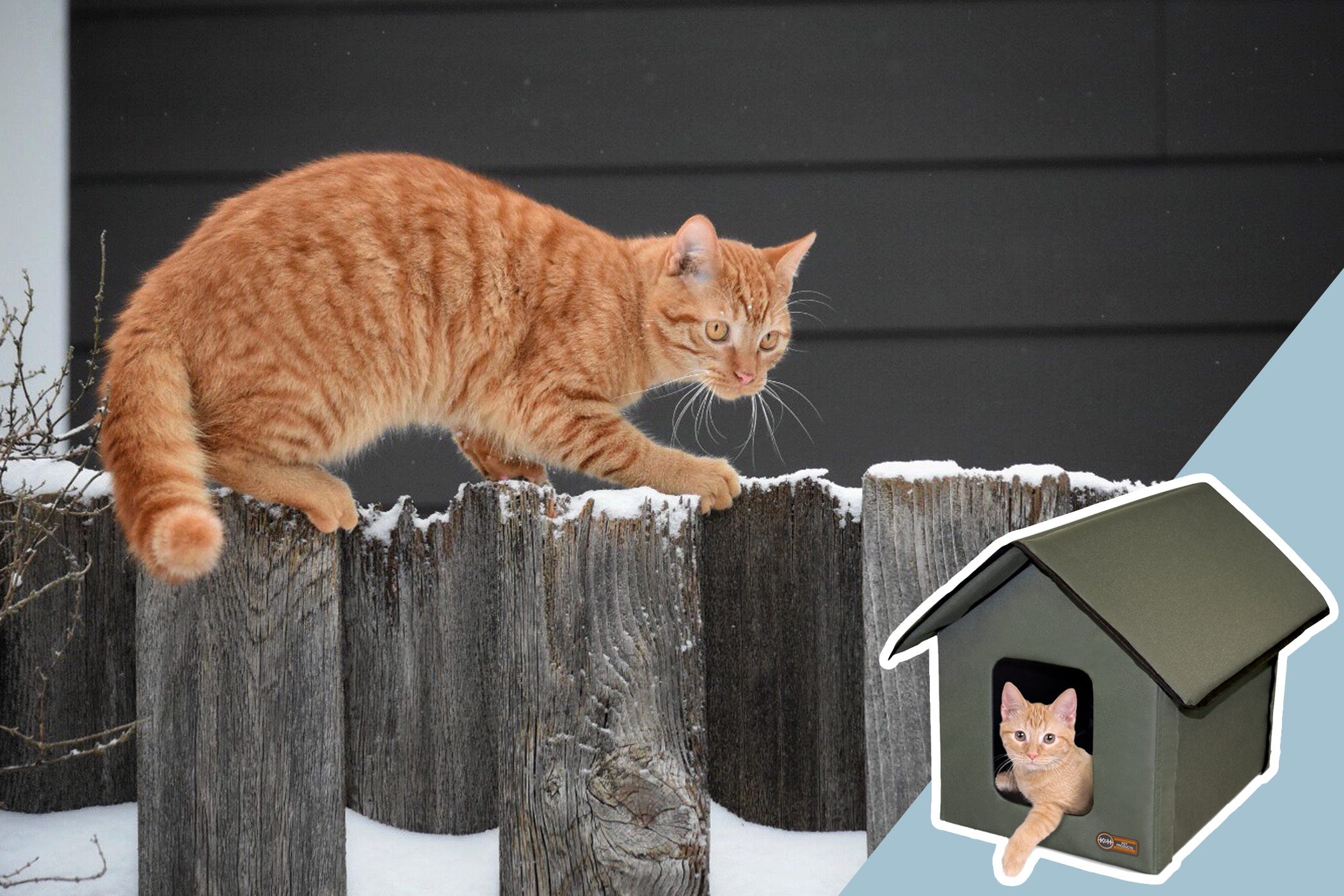
Don’t assume your outdoor cat can cope in the cold
$58.99
Dr. Kornreich understands that many cats do spend lots of time outdoors, but he says that in winter, owners shouldn’t assume they’re warm enough. “People tend to think that cats are kind of wild and can take care of themselves,” he says, but their coats don’t fully protect them. Dr. Kornreich sees cases of hypothermia and even frostbite in cats that have spent too much time in the cold.
“They do grow a winter coat if they spend enough time outdoors, but it doesn’t protect them completely,” Dr. Kornreich says. “When cats get cold, the body shunts the blood away from peripheral areas—like the ears, the nose, the paws, the tail—to the vital organs, like the kidneys, brain, and heart.” Frostbite makes the skin look pale or grayish, and in extreme cases, it can turn black and peel off. A cat with hypothermia might seem depressed or anxious and be shivering and crying—and don’t miss these other 14 cat health symptoms you should never ignore.
Remember, too, that cats sometimes seek out the warmth of a car engine. “They’ll crawl up underneath and kind of hide in there and they can be injured when the engine starts,” Dr. Kornreich says. “We always say, make some noise, bang on the hood, and take a quick look to make sure there are no cats in the wheel wells before starting your car.” A heated kitty house, like this one from K&H Pet, can give them a safe space to hide out.
Another danger for outdoor cats is that their water supply becomes unusable. “If the cat is outside and doesn’t have access to unfrozen water, that’s a problem,” Dr. Kornreich says.
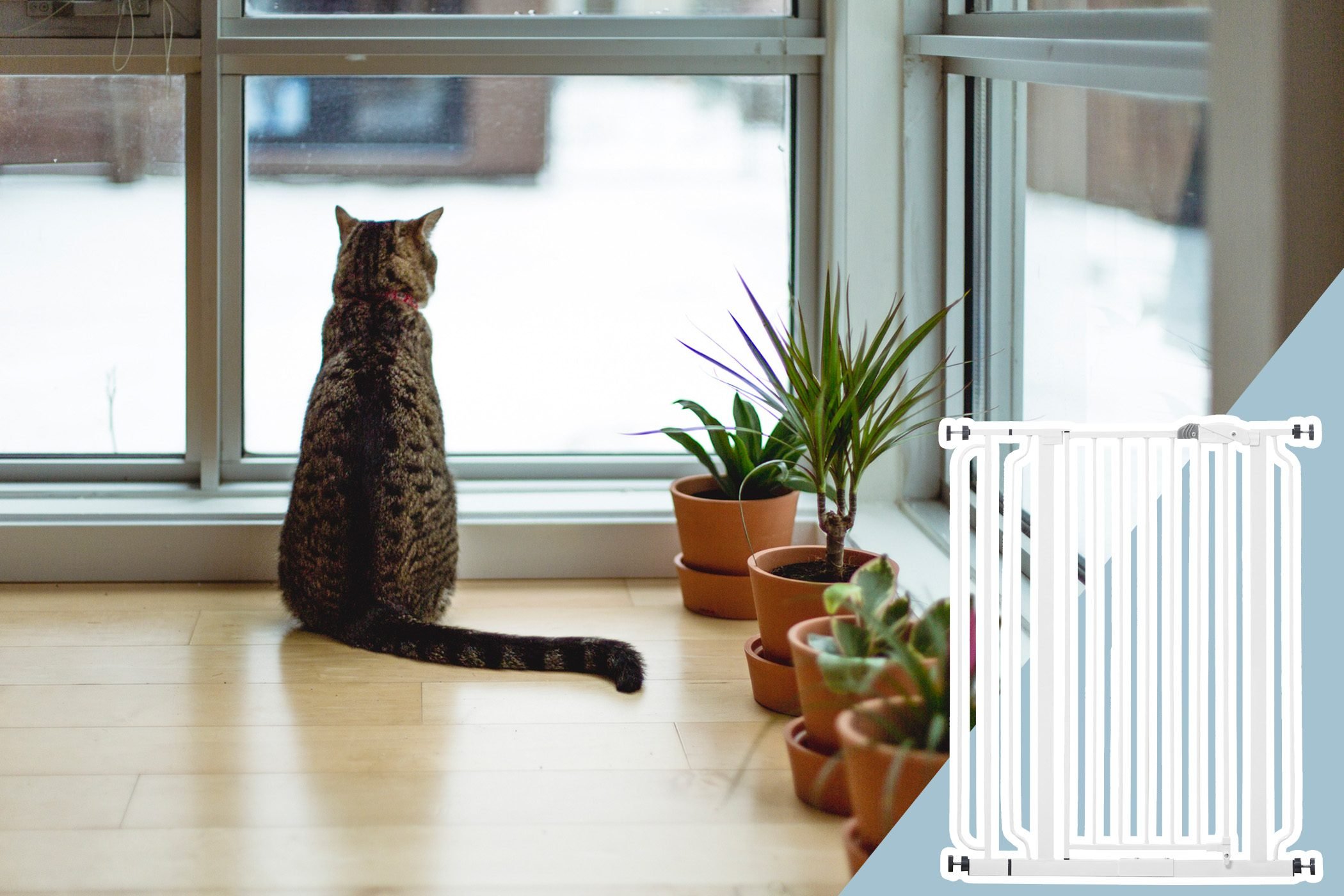
Make sure indoor cats stay indoors
$46.99
Cat owners who follow Dr. Kornreich’s suggestion and keep their cats indoors year-round can still run into problems if their cats sneak out and aren’t used to being outside. “What you really don’t want to have happen is that a cat gets out and gets freaked out and gets lost,” he says, so make sure indoor cats don’t escape. An extra tall gate like this one from Regalo may help prevent some cats from escaping.
And if your cats are used to coming and going (and know their way around), make extra-sure in cold weather that they’ve returned before you go off to work or head out for a night on the town. “You don’t want to let them out in the morning and then leave, and they can’t get back in,” Dr. Kornreich says. “That does definitely happen.”
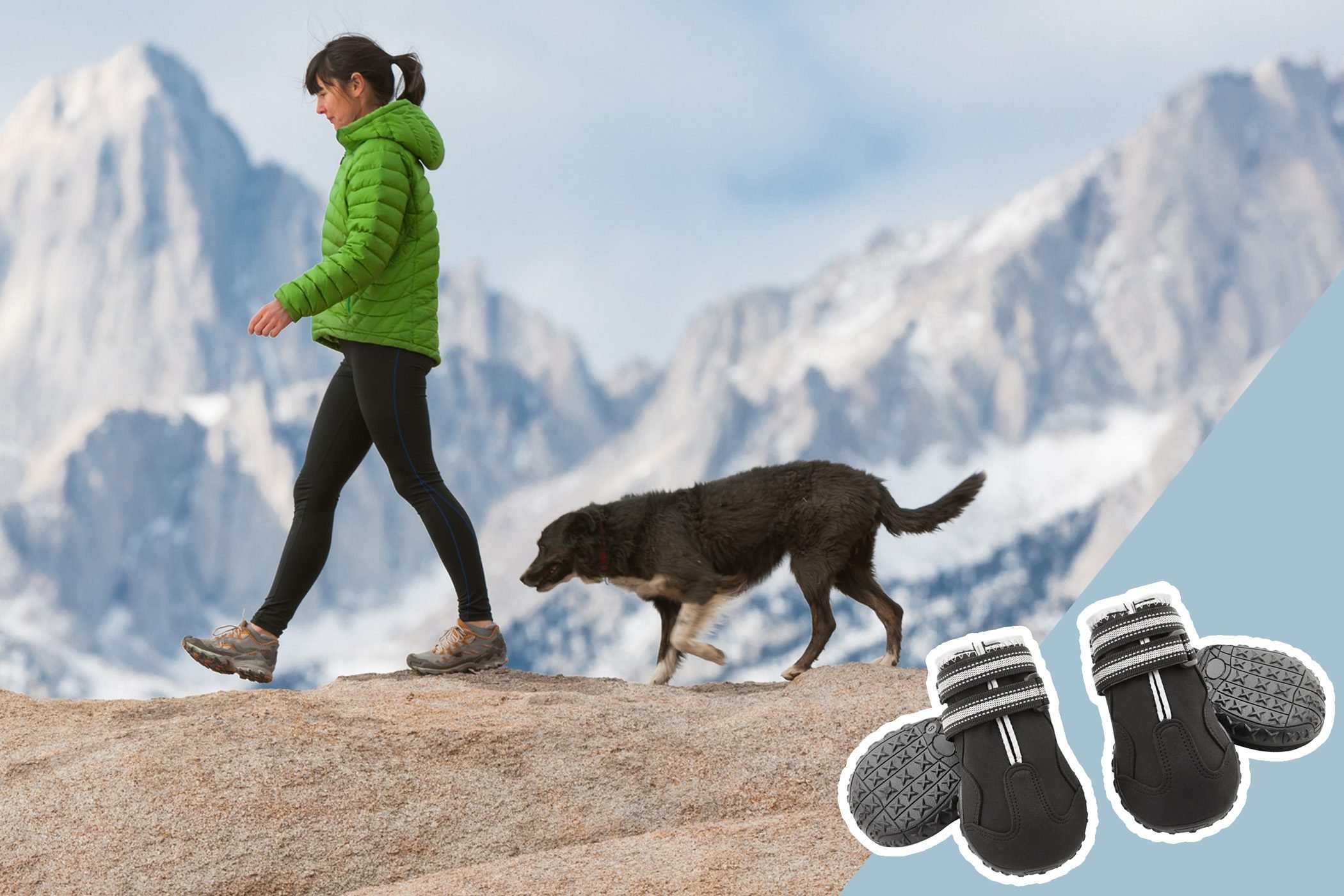
Prepare your pooch for long hikes
$32.99
Part of the fun of winter is going outside with dogs, who often love running and playing in the snow. “If want to take your dog for a couple of hours of hiking in cold conditions, be prepared,” Dr. Frank says. “You need to carry food and water for the dog—even in winter conditions, they can get dehydrated.” If you’re heading into the wild for longer than a couple of hours—perhaps to one of these 12 pet-friendly national parks you need to visit with your dog—he definitely recommends including your dog, if it likes cold weather. For a four-hour hike or longer, Dr. Frank says you can bring energy bars made for dogs. They’re rich in simple glucose, so they’ll give quick energy to your pup in the snowy woods.
You’ll also want to protect dogs’ paws during serious excursions. “Boots make sense if you do something intense, for a couple of hours or more,” Dr. Frank says. (We like these from Frisco.) However, he adds that you’ll need to take them off your dog every hour or two and check their feet. Dogs sweat from their paws, so be sure no ice balls have formed, and make sure no tiny stones are caught inside the bootie.
If you’re camping overnight, or if you take breaks during a long outing in very cold conditions, bring along a warming vest or harness for your dog. These use warming gel packs just like the ones you can keep in your pockets or boots.
Dr. Frank has one other serious precaution for people who take their dogs out hiking in winter: “All kinds of parasites live in puddles that can give your dogs gastrointestinal upset,” even in cold weather. Don’t let them drink water you didn’t bring.
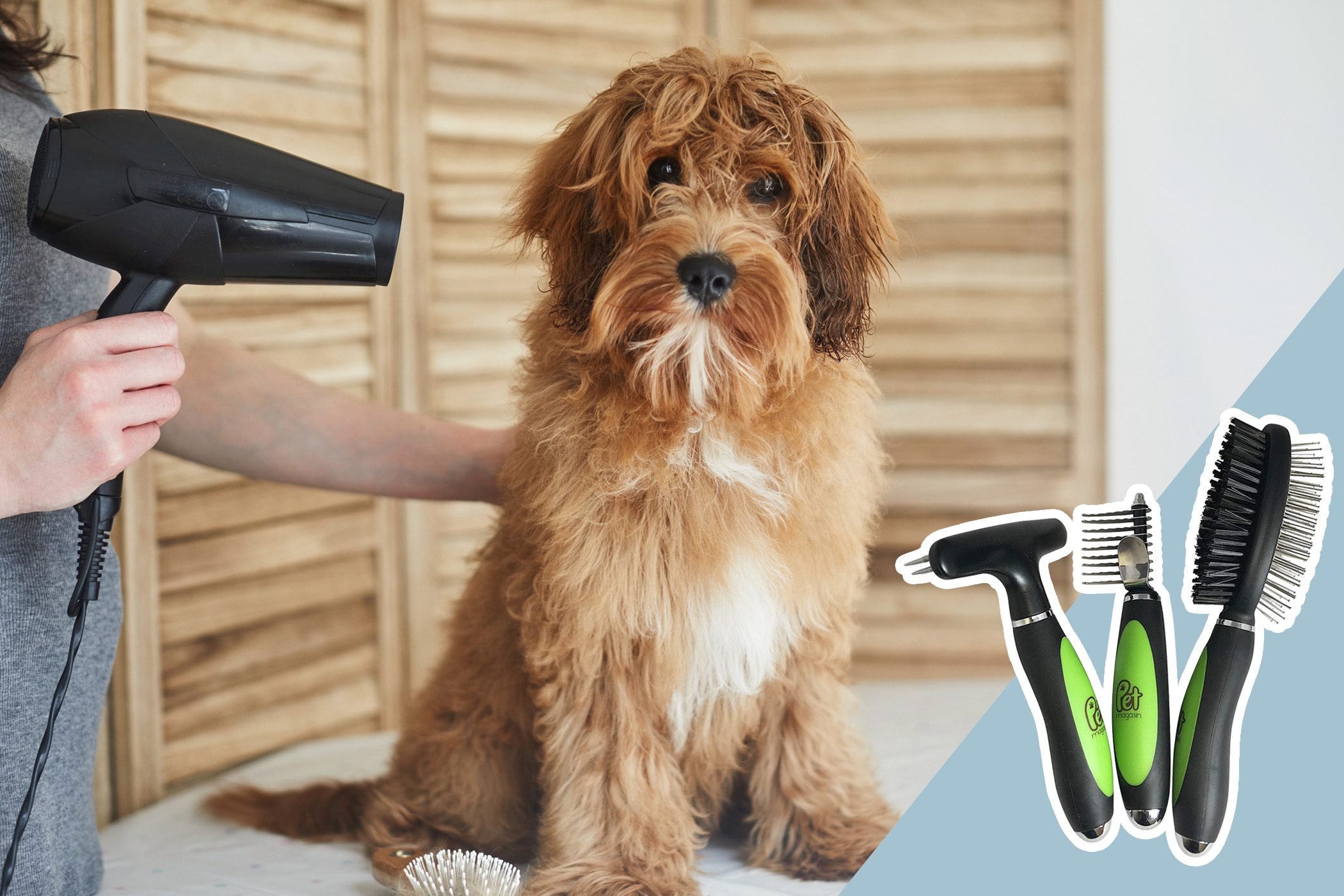
Proper grooming matters
$12.60
You might think that more fur is better for extra warmth this winter, but that’s not necessarily the case. “Curly-coated dogs—like poodle mixes—need grooming in winter as well,” says Dr. Joslin. “I often see patients who let their dog’s hair grow longer in the winter, but forgot to brush it regularly. The hair of these breeds needs frequent brushing to keep it from getting matted.”
Their hair will stay wet for a long time after playing in the snow or going out in the rain and quickly gets matted and dreaded—and matted hair can lead to skin infections and can be painful. Plus, curly-coated breeds will get snow and ice balls on their coat after romping in the snow. “If your dog has this type of hair, you will want to have your groomer leave it a bit longer for warmth but not so long it stays wet and holds snow clumps,” she says. “And make sure it’s brushed several times a week.” If you like to take matters into your own hands, here’s how to groom your dog at home.

Store antifreeze in a secure place
$50.89
Antifreeze is a life-threatening toxin to pets, Dr. Kornreich says. “Apparently, the ethylene glycol—the thing that gives it anti-freezing properties—tastes good to dogs and cats,” he says. They’re at risk if a container is left accessible and open, and also if the chemical spills on the garage floor or driveway, so store it safely away in a container with a lid. “Cats will lick that or they’ll walk through it and lick their paws,” he says. It disrupts kidney function and neurologic status, so be on the lookout for spills or leaks and make sure to clean them up immediately. Look out for these other household items that are seriously hazardous to pets.
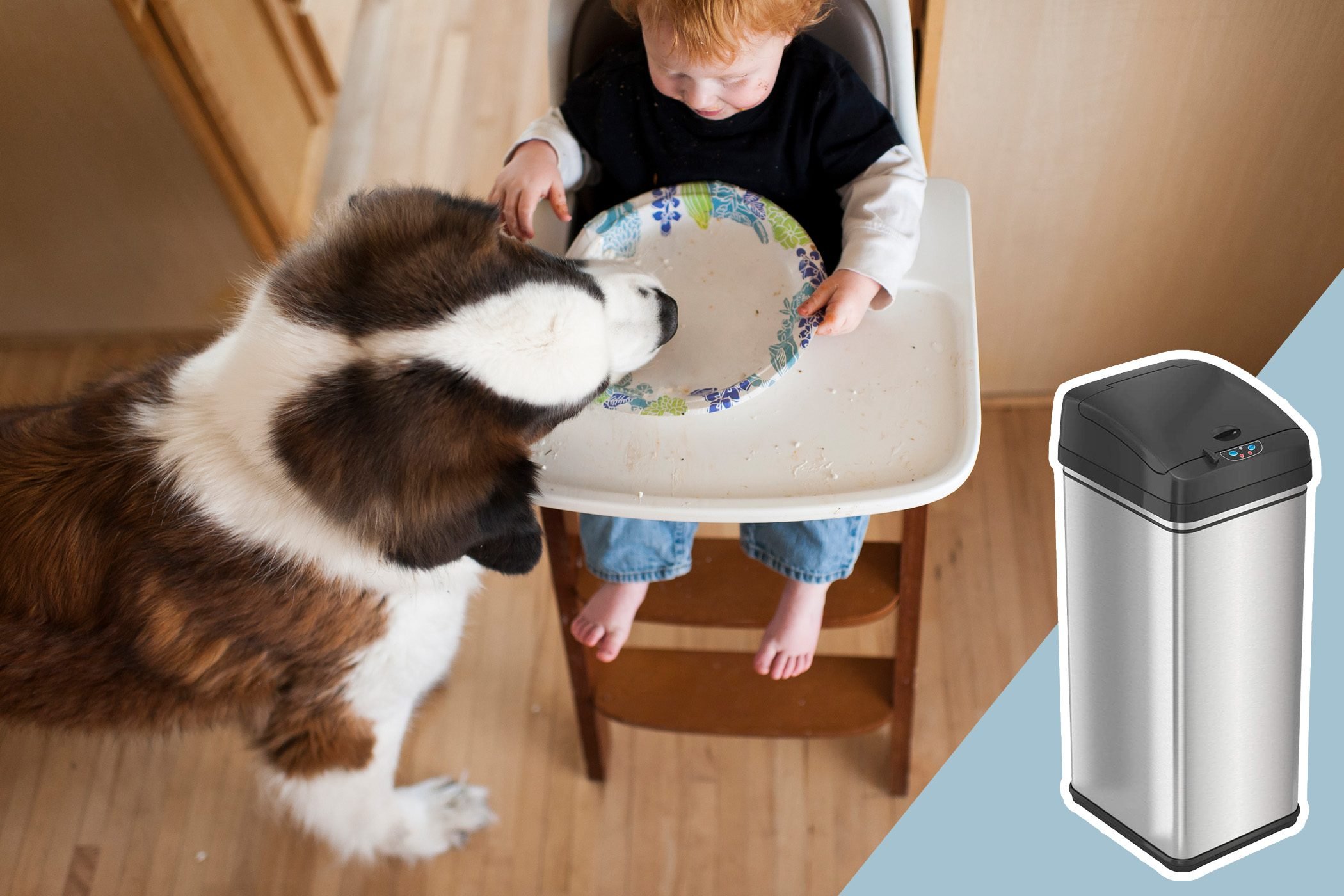
Don’t feed pets holiday dinner scraps
$70.48
Pets can ingest toxic substances inside the house as well, particularly around the holidays when there’s so much extra food around for people. “Chocolate, macadamia nuts, and xylitol are all bad for dogs,” Dr. Frank says. Meanwhile, Dr. Kornreich advises keeping cats away from bones they might choke on, alcohol, and very fatty foods, which can induce pancreatitis—a pet-proof trash can like this one from iTouchless can help. “Make sure that cats don’t have access to table scraps,” he says. Here are 11 more foods you should never feed your pet.
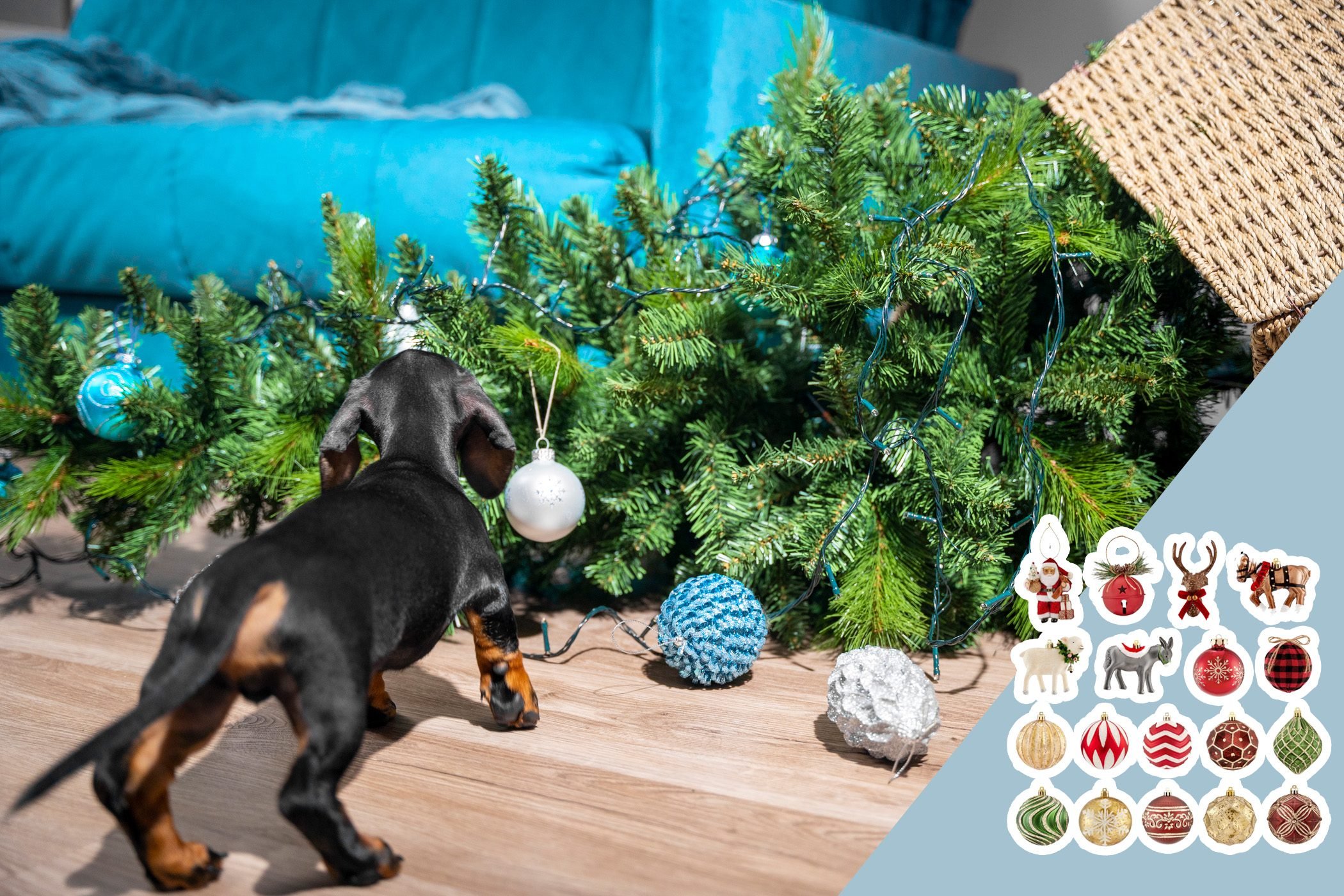
Keep holiday decorations out of your pet’s reach
$24.98
“While holiday decorations are enticing for our furry companions to explore, they can pose hazards as well,” says Dr. Joslin. “Trees and plants that are popular during the holidays can be toxic to our pets if they are chewed or eaten.” She says that the plants to pay attention to include (but are not limited to) Holly, Mistletoe, Amaryllis, Lilly Cyclamen, Sago Palm, Jerusalem Cherry, Poinsettia, and Christmas trees.
“Live Christmas trees can pose a hazard to cats and dogs if they chew the needles and branches,” says Dr. Joslin. “The oils from the tree can irritate their mouths and cause pain and drooling, as well as vomiting. Some commercial trees are treated with chemical preservatives that leach into the water at the tree base and make it poisonous to drink. Makes sure you cover the water in the tree stand—plastic wrap or aluminum foil and a tree skirt usually do a great job.” Always make sure to supervise pets around plants, keep them out of reach, choose silk or artificial options, or skip them altogether.
Also, keep an eye on your sparkly décor—particularly ornaments, garland, and tinsel. “They can cause a gastrointestinal obstruction,” says Dr. Kornreich. These ornaments from Home Depot are shatterproof, which means they won’t break even if your kitty manages to bat one off the tree.
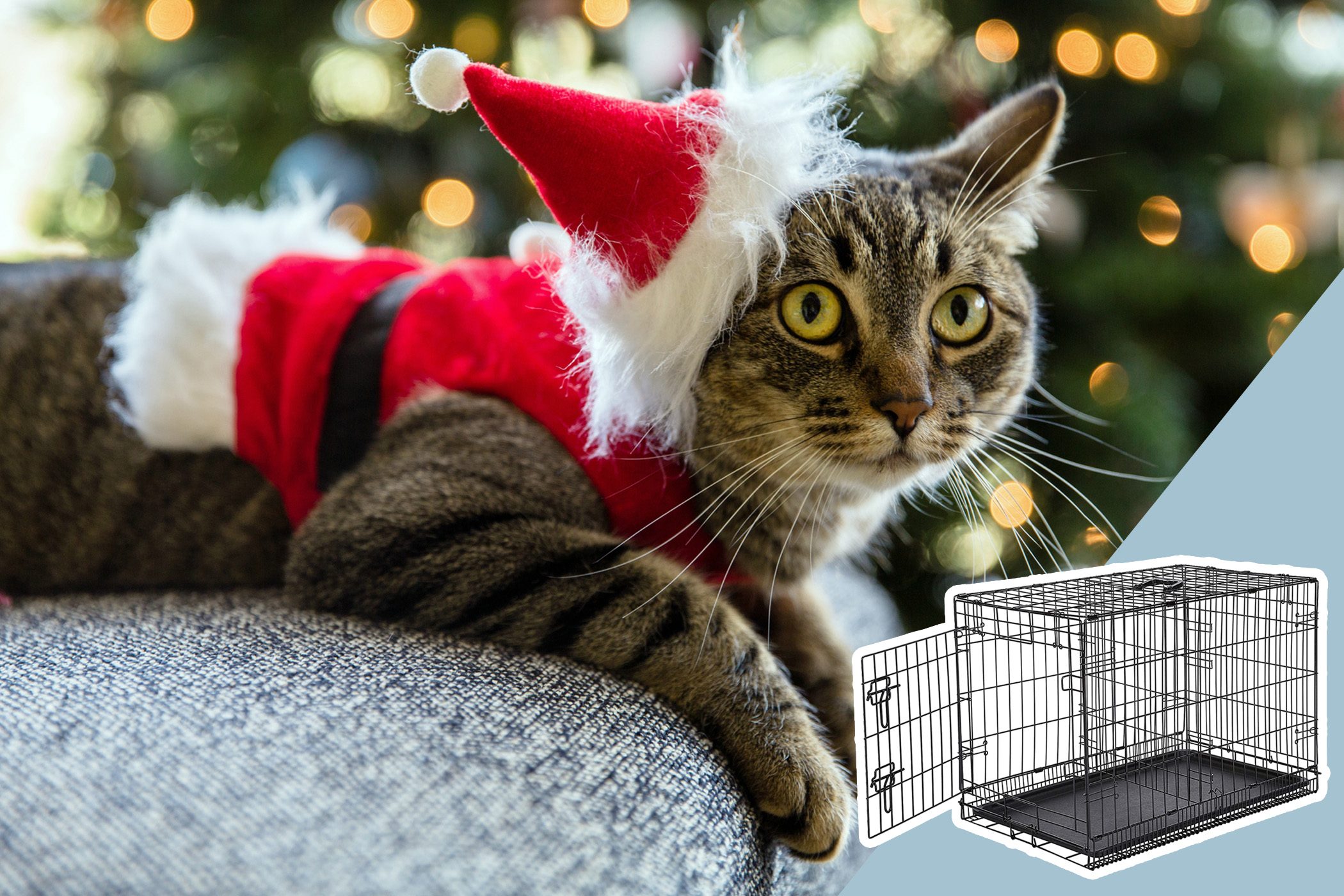
Help them handle holiday guests
$28.99
Don’t forget about your pets when your house fills with extra people. Kornreich says there are two rules for keeping your pets safe when you have company over for the holidays. One, provide a comfortable and quiet place for dogs and cats to get away from crowds if they need a break (and make sure visiting children can’t access them when nobody’s paying attention). And two, “Make sure that pets don’t bolt out of the house when people are coming in and out,” Kornreich says. Crate training can help solve both problems.

Be mindful of space heaters and fireplaces
$119.99
‘Tis the season to keep everyone you love warm, which usually means cozy fires and portable heaters. “Space heaters and fireplaces are usually safe around pets as long as you use the commonsense guidelines of not allowing pets direct access to them and providing supervision,” says Dr. Joslin. “Make sure to use a fireplace screen to keep hot embers in and pets out. Space heaters should be out of the way from pets so they can’t be knocked during play.” Always avoid horseplay around heat sources to avoid accidental burns and keep pet bedding and blankets a safe distance away from them.
Also, be sure to check up inside of your fireplace flue if you have cats before you light a fire. “It’s also a good idea to check the chimney flue at the beginning of winter for any wildlife who may have made a home,” she says. Finally, never leave space heaters on or fireplaces burning when you are not home—besides being a fire hazard, there is also the carbon monoxide hazard the could kill a pet. A smart space heater, like this one from Atomi, can be controlled via an app on your phone, so should you ever forget to turn it off before you leave, you’ll be able to do it remotely.
Sources:
- Dr. Antje Joslin, DVM, veterinarian at national dog daycare franchise Dogtopia
- Bruce Kornreich, DVM, PhD, associate director of the Feline Health Center at the Cornell University College of Veterinary Medicine
- Ilan Frank, DVM, sports medicine and rehabilitation resident at Colorado State University’s Veterinary Teaching Hospital
